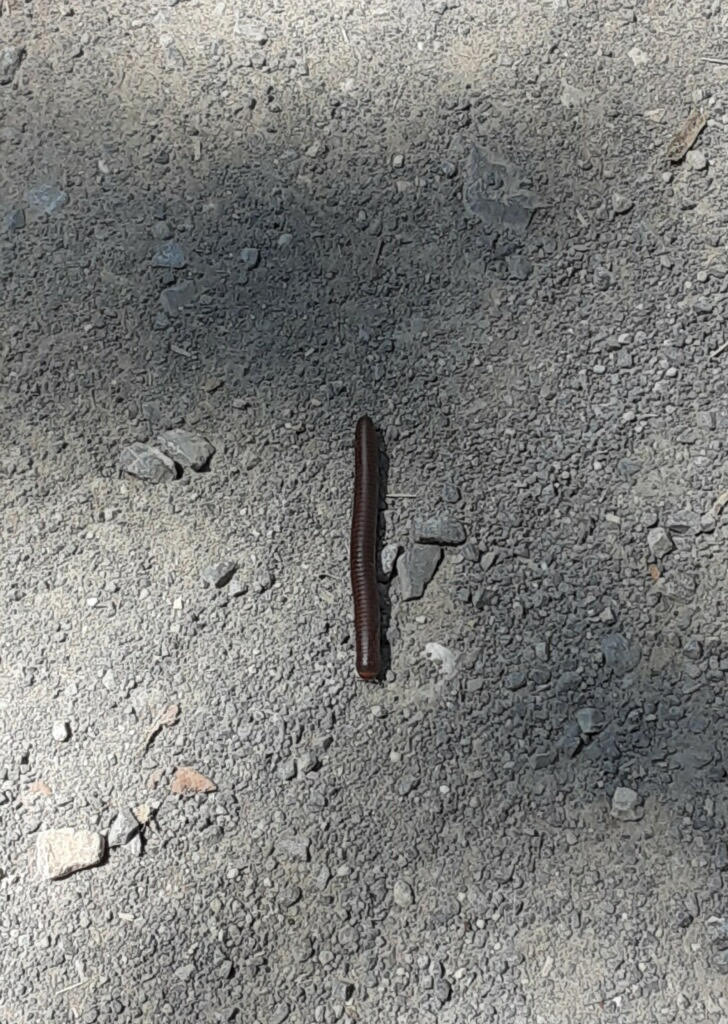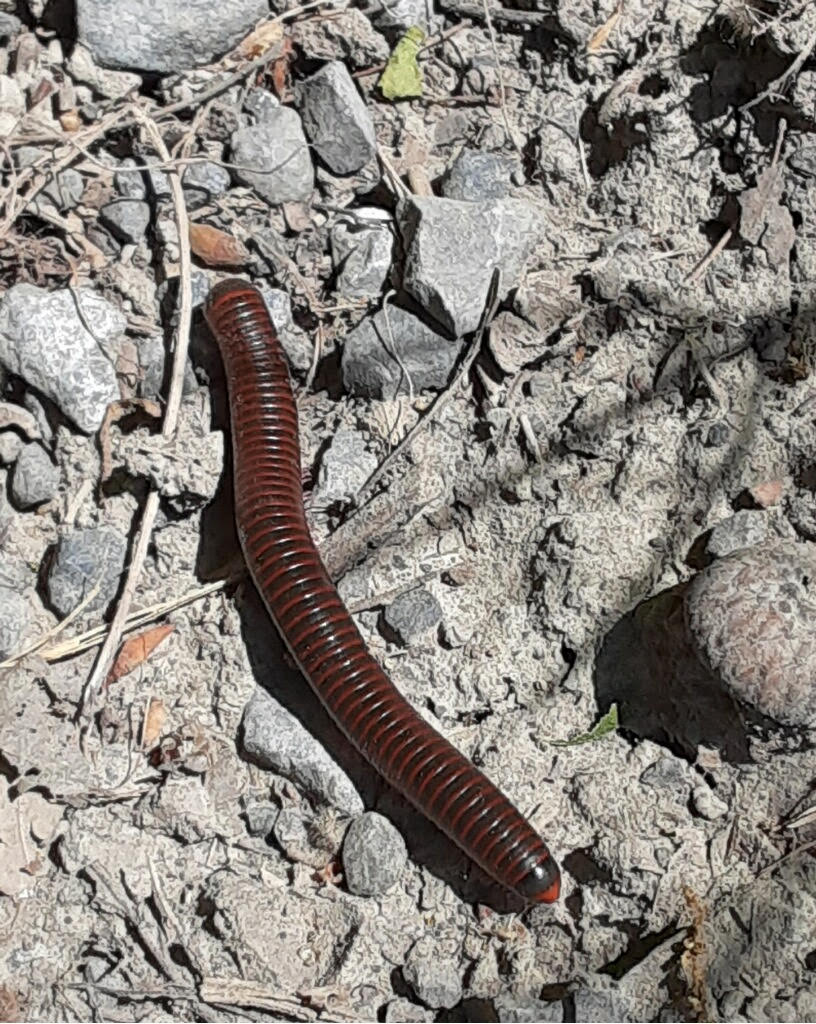By Susan Sprout
On the march, a three-inch-long millipede was crossing a dirt road in Ravensburg Park, going from the dry forest towards a creek bank. Its journey may well have been ended as a car came zooming towards it. My quick intervention moved this leggy critter, placing it in the roadside ditch that it appeared to be travelling toward. Millipedes are one of the first and largest air-breathing invertebrates (without a backbone) to walk on land some 420 million years ago and growing to six and a half feet long and a foot and a half wide. That fast car would surely have wrecked if it had run over one of those. What a speed-bump that would have been!

The species of millipede I saw was probably Narceus americanus AKA American Giant Millipede, Worm Millepede, Iron Worm. It is not a worm and certainly not made of iron, but an arthropod more closely related to shrimp, crayfish, and lobsters. The outer covering of its segmented body is made up of plates of chiton (like your fingernails) and has two pairs of jointed-legs per segment. “Millepede” means thousand-legged, but this type only has between150 and 200 legs total.

Why am I writing about a millipede? Well, it was underfoot (almost undercar) and found in the woods where I find so many great plants! Actually, millipedes are considered a beneficial species for all of us, plants and animals, because they decompose decaying plant matter. They, and thousands of species worldwide, live by breaking down and recycling nutrients back into the soil much faster than plants decompose naturally. Bacteria, algae, fungus, critters in the soil, as well as the more obvious green plants and trees on top of it, will uptake their rich body byproducts to keep on growing.
Millipedes breathe using spiracles on their segments – small openings that deliver oxygen into a trachea and their body tissues. Most arthropods can regulate (open and close) these openings. Millipedes cannot and must live in a moist or humid environment or they will desiccate and die. Eyes on both sides of their heads can detect light and movement. Their amazing antennae have the ability to taste food, smell odors like pheromones for sensing mates, feel their way as they dig or perambulate across a road, tell differences in temperature and find water. My guess is, the millipede I was lucky to find, was on its way to moister ground near a stream. Although blessed with remarkable senses for use in its habitat, it could not detect a moving car. So, drive slowly through the woods, save these guys when you can, and then wash your hands. Their defensive secretions, though they show promise as sources for new medicines, can make you itch!
Check out National Wildlife Federation and Animal Diversity Web for lots more interesting info on Millipedes.

